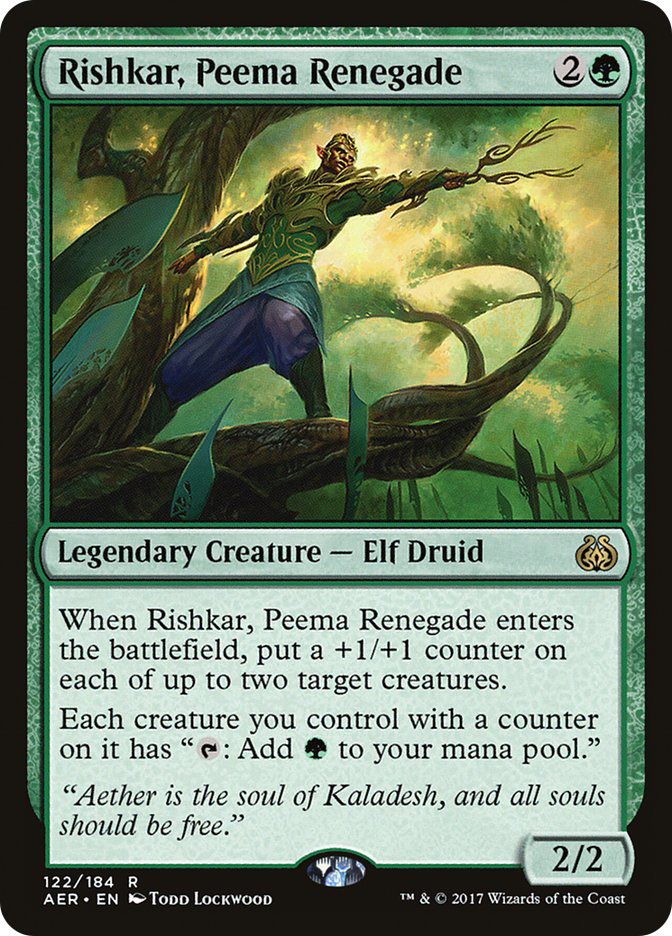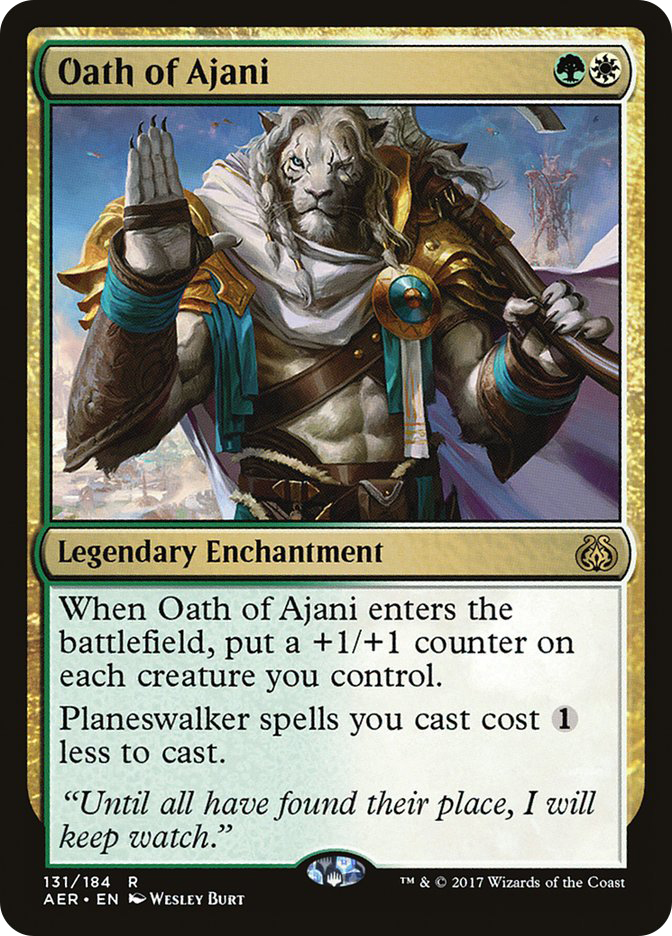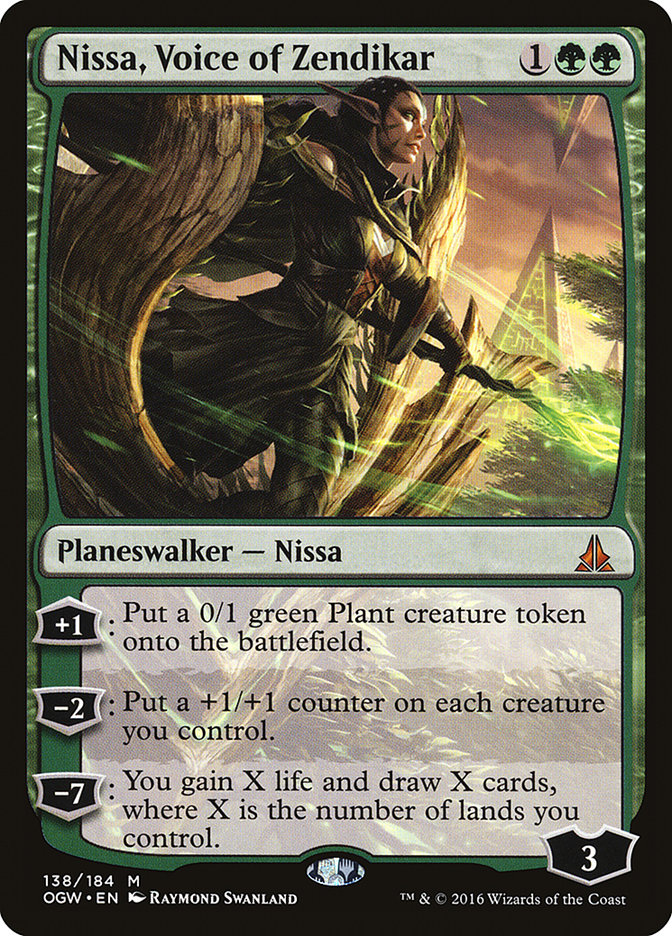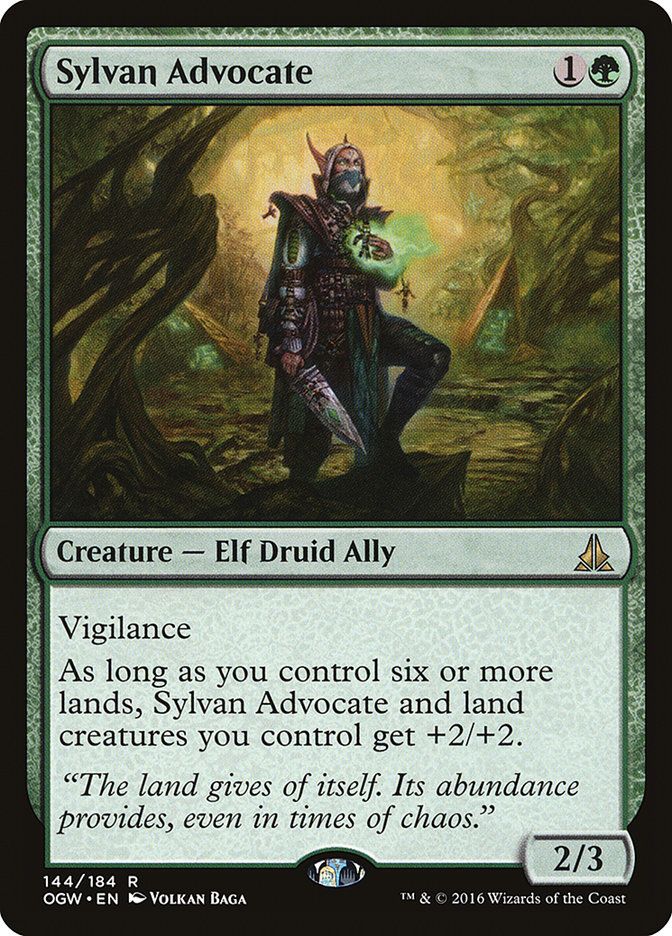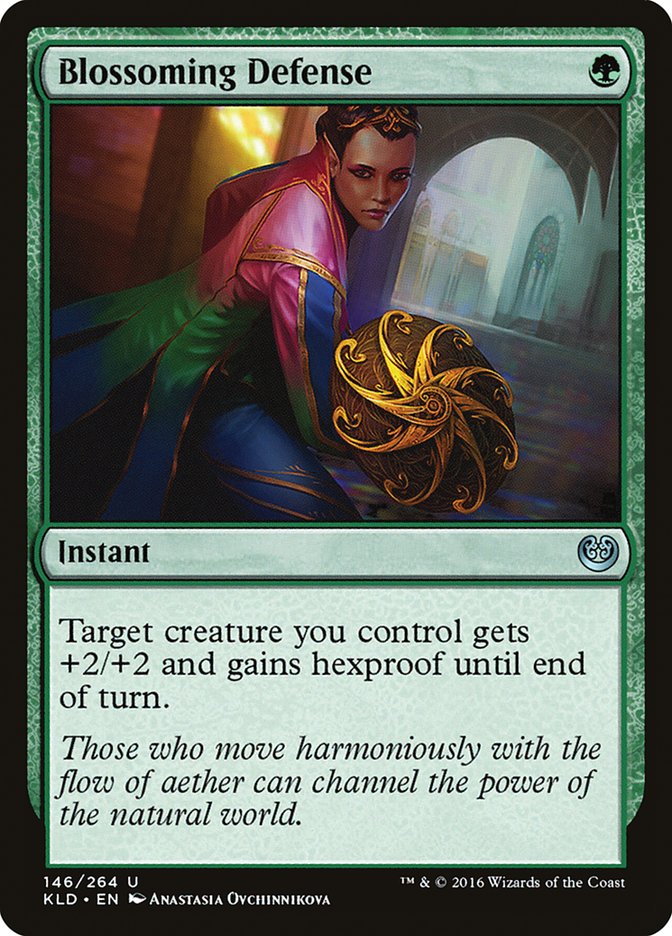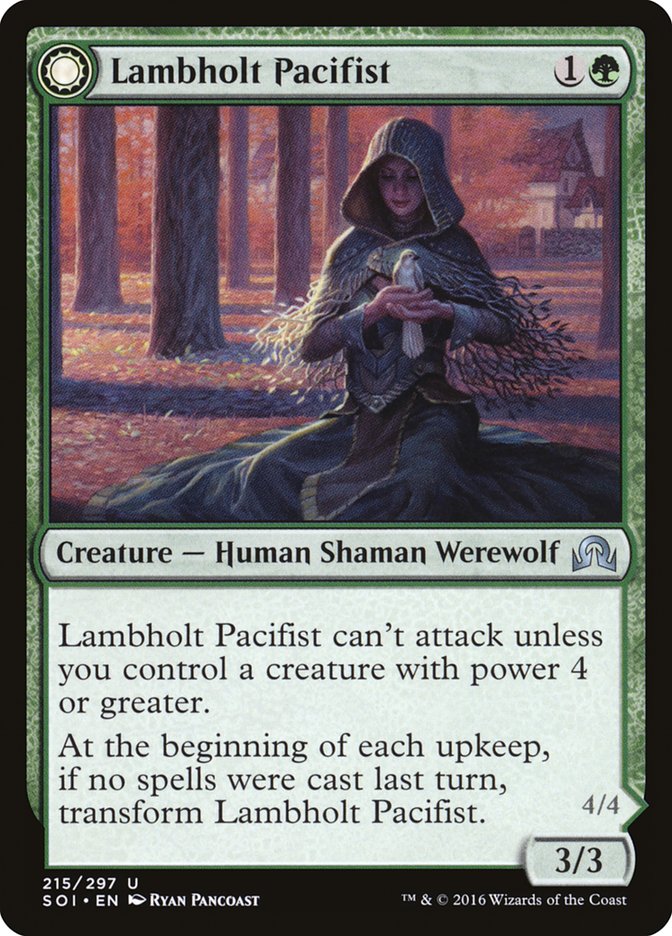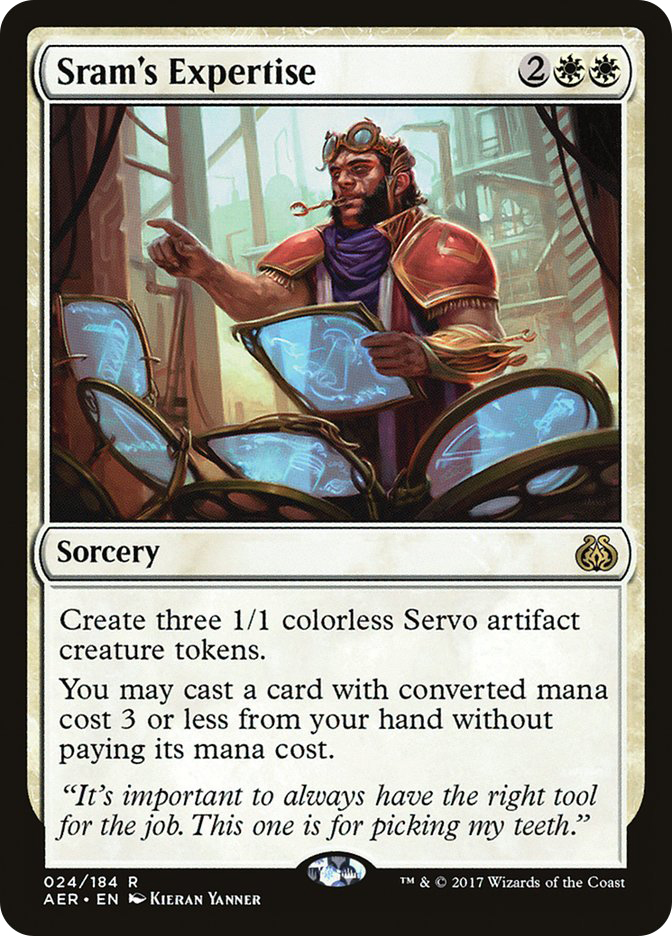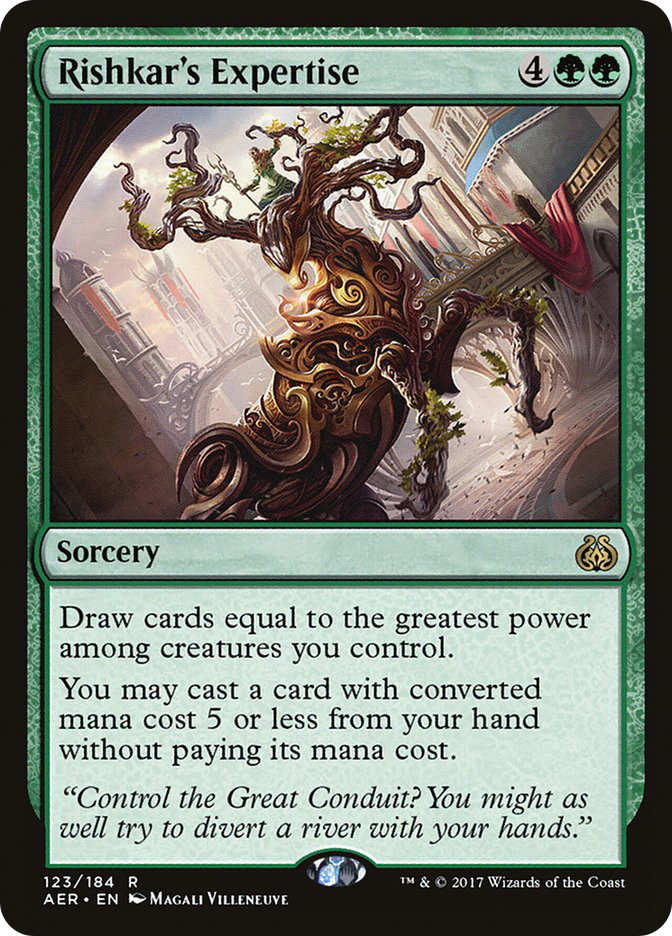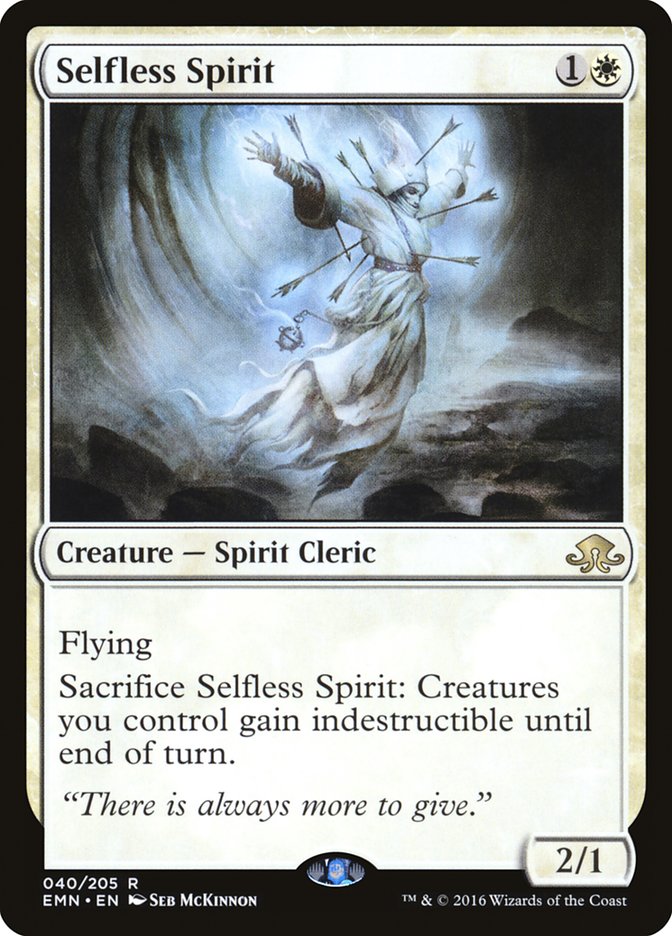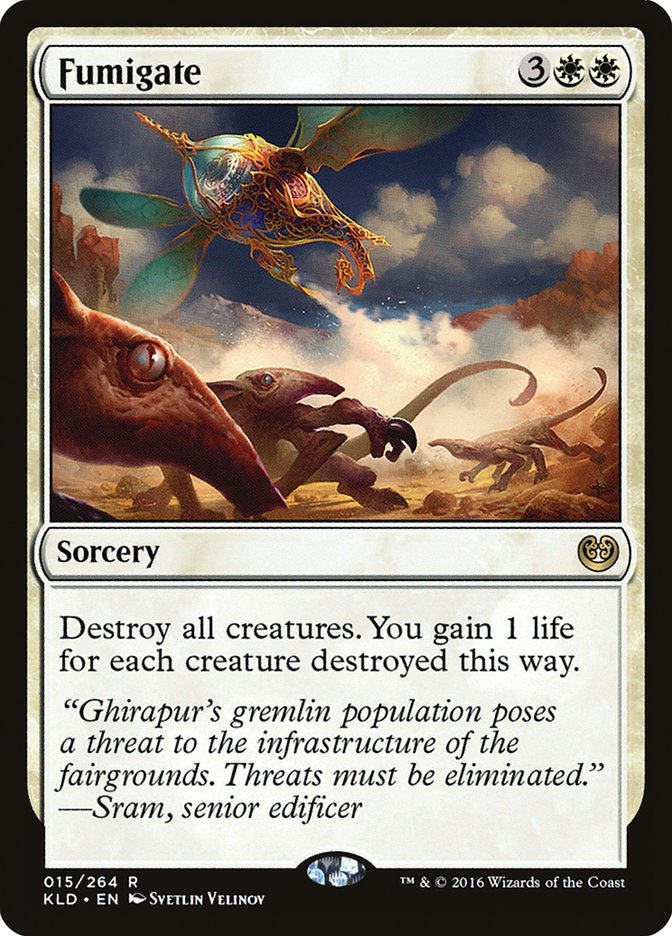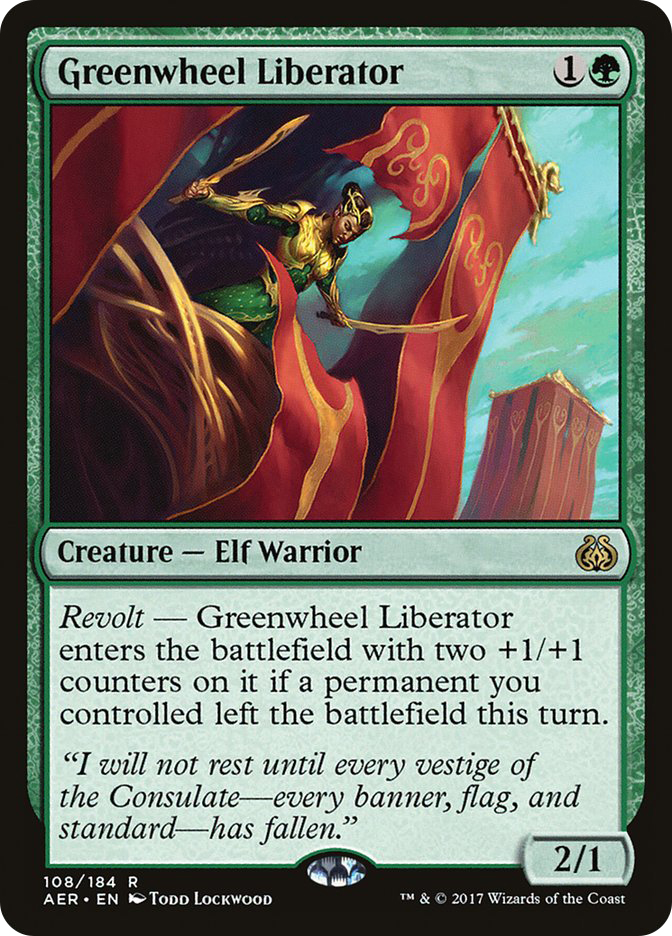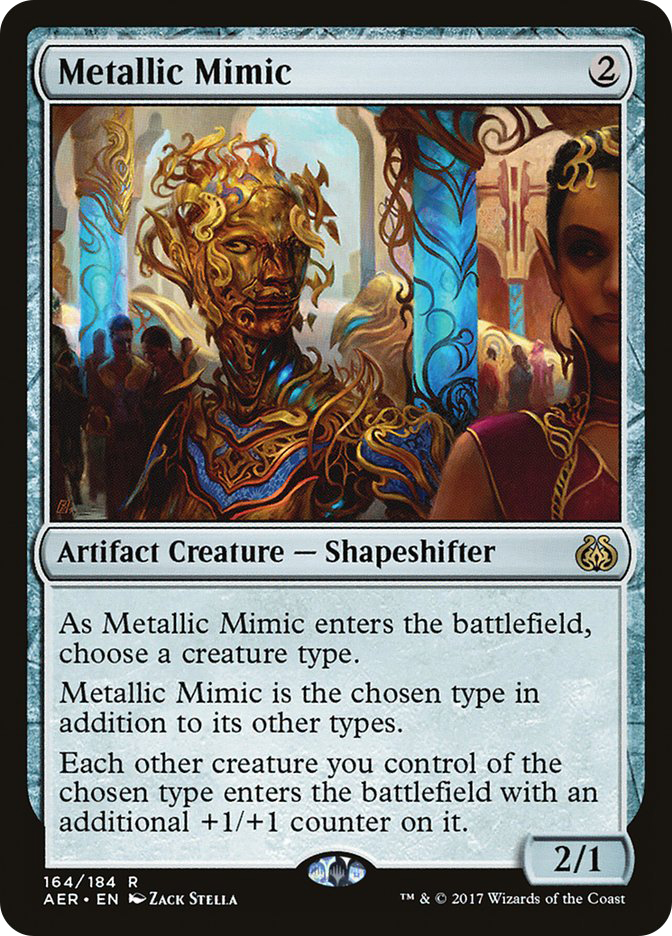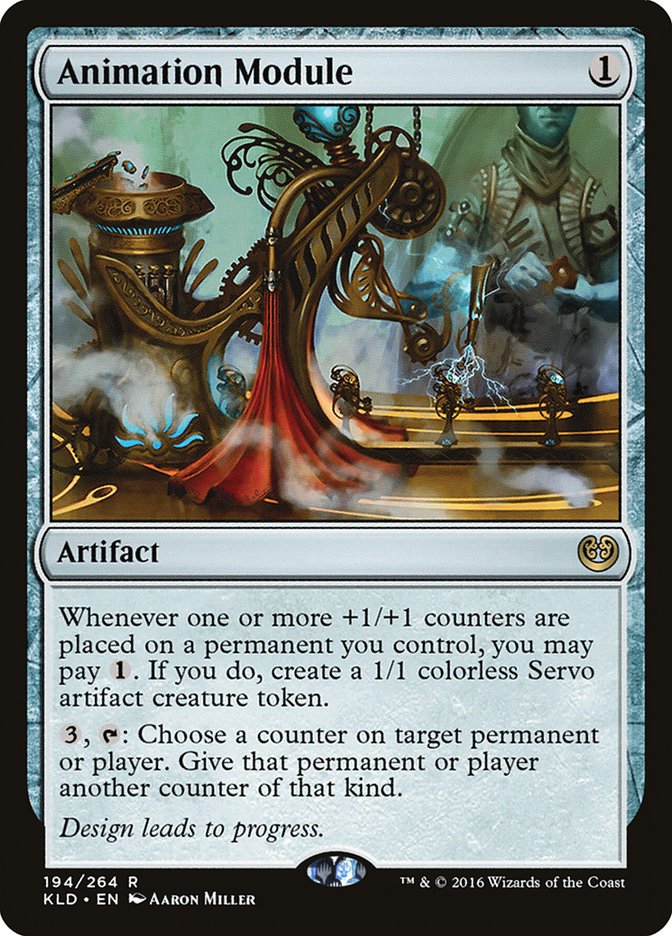Aether Revolt previews have weirdly gone from zero to 60 in a single day. There are more new cards to tackle than time in the day, but we’ve got to start somewhere…
Okay, there’s a lot to unpack with Rishkar, Peema Renegade.
For starters, he’s at least 3/3 worth of body, since he can target himself with one of the +1/+1 counters. Whenever you have at least one other creature on the battlefield, you’re getting 4/4 worth of material, spread across two bodies, with +1/+1 of it functionally having “haste,” and getting the benefit of whatever multipliers the other creature might have (such as lifelink, flying, double strike, etc.).
Since you can share two of the counters, you can actually spread the value across three bodies, with +2/+2 of the material having haste. The enters-the-battlefield ability is also interesting on a legendary creature, giving you something to do with extra copies, rather than just hold on to them in case Rishkar dies.
In addition to the +1/+1 counters, Rishkar is an interesting and powerful source of mana. By itself, it’s a 3/3 that taps for a green mana. However, it’s usually also giving another creature +1/+1, which means at least one other creature of yours can be turned into a mana source on demand.
There’s a little bit of trickery going on here, since your creature with a +1/+1 counter on it is usually missing a reasonable chunk of damage by tapping for mana. However, there’s also some secret power, since you can put the +1/+1 counters on creatures without summoning sickness, effectively getting two of your three-mana investment back immediately. What’s more, if you’ve got creatures with their own +1/+1 counters or you give your creatures +1/+1 counters, you can pretty easily accidentally stumble into a boatload of mana.
Interestingly, Rishkar’s ability applies to creatures with any type of counters on them, so if WotC happens to bring back -1/-1 counters in the next block, there are some strange synergies possible (plus you can already do stuff in Modern with Kitchen Finks or whatever).
Standard has a number of great ways to give your entire team +1/+1 counters, and that’s to say nothing of the possibility of using creatures that gain their own +1/+1 counters, like Tireless Tracker.
Creatures (19)
- 4 Sylvan Advocate
- 4 Archangel Avacyn
- 4 Thraben Inspector
- 3 Lambholt Pacifist
- 1 Verdurous Gearhulk
- 3 Rishkar, Peema Renegade
Planeswalkers (8)
Lands (26)
Spells (7)

Rishkar, Peema Renegade is kind of interesting with Sylvan Advocate, on account of how well his ability works with vigilance.
A turn 1 Thraben Inspector into turn 2 Sylvan Advocate could be attacking for five on turn 3 after you cast Rishkar. However, you could also just attack with the Sylvan Advocate and then tap it on your opponent’s end step (along with Thraben Inspector) to draw a card from your Clue.
This also means that after your Sylvan Advocate (or Archangel Avacyn) attacks, it can be counted on for an emergency source of green mana, should you need to Blossoming Defense.
Rishkar is also an interesting way to help ensure that our Lambholt Pacifists can reliably attack. In fact, maybe we’re supposed to lean into that aspect even more, possibly using a bunch of Oath of Ajanis?
One of the sources of tension would seem to be the forces pulling us towards +1/+1 counter synergies versus just making lots of tokens and buffing everything. For instance, instead of Lambholt Pacifist, we could move more towards something like Sram’s Expertise.
Sram’s Expertise certainly plays into the token theme, and tokens are generally good to buff. However, drawing both Lambholt Pacifist and Sram’s Expertise seems like it has the potential to lead to some clunky draws. It’s not the biggest deal, but using the mana-cheat ability of Sram’s Expertise also implies you’re casting a second spell in a turn, flipping the Pacifist the wrong way.
It is convenient that Sram’s Expertise gives you the Servos first and then casts the spell. This way, casting Oath of Ajani will actually buff the Servos. It’s also kind of cute that Sram’s Expertise gives us some extra ways of casting Nissa, Voice of Zendikar, even if we happen to only draw one green source.
It’s possible that the way to use Sram’s Expertise is to take advantage of it as a source of three artifacts, whether having lots to sacrifice, lots of artifact-entering-the-battlefield triggers, or lots of artifacts for Improvise. We might even focus on the Servos aspect with cards like Master Trinketeer.
Sram’s Expertise and the entire Expertise cycle have strange implications for Modern. For instance, here’s a possible Esper deck that takes advantage of Sram’s Expertise and Yahenni’s Expertise to abuse Ancestral Vision:
Creatures (6)
Planeswalkers (2)
Lands (22)
Spells (30)

I’d like to stick with Standard for today, but just to make sure we’re on the same page…
Yeah. Pretty damn good with fetchlands, but it’s also interesting to consider how it changes the value of Mishra’s Bauble, Mox Opal, Chromatic Star, Lantern of Insight, Seal of Fire, Viscera Seer, Mind Stone, Snapcaster Mage, Fulminator Mage, and so on. Sam Black has plenty to say about this in his excellent article from today.
Anyway, switching back to Standard, Sram’s Expertise isn’t the only Expertise we might consider for G/W.
Rishkar’s Expertise has the potential to be pretty absurd, since it doesn’t take that much to draw four or five cards off it as well as save four or five mana. Obviously, we need to already have a creature on the battlefield, but that isn’t necessarily that big of an ask. For instance, what if we cast an Archangel Avacyn on our opponent’s turn, untap, and Expertise? Now we can even follow up with a five-drop like Verdurous Gearhulk!
Creatures (20)
- 4 Archangel Avacyn
- 4 Thraben Inspector
- 4 Selfless Spirit
- 2 Verdurous Gearhulk
- 4 Servant of the Conduit
- 2 Rishkar, Peema Renegade
Planeswalkers (4)
Lands (27)
Spells (9)

The Fumigate angle might be too cute for the maindeck, but it sure is an exciting card to play for free after drawing a ton of cards. Selfless Spirit makes it pretty easy to turn it into a Plague Wind. Additionally, if the way we drew five cards from Rishkar’s Expertise was Gideon, Ally of Zendikar, we don’t even need to lose anything, since Gideon is indestructible when a creature.
Of course, once we’ve drawn four or five cards, we’re not necessarily short on good options to cheat into play for free. Verdurous Gearhulk is obviously very exciting (and a great creature to play pre-Rishkar’s Expertise), but even Ishkanah, Grafwidow is an excellent follow-up, stabilizing most battlefield positions you might find yourself in.
It might sound silly, but even just casting Blossoming Defense prior to Rishkar’s Expertise might be good. After all, the Expertise does turn Blossoming Defense into a one-cost draw-two (that might even translate into two extra damage).
Rishkar himself is actually a pretty great way to help support an above-average number of five and six-drops. After all, with any one- or two-drop, Rishkar enables a turn 4 Rishkar’s Expertise, drawing three cards and then casting a bomb four- or five-drop. Sure, that isn’t the biggest Rishkar’s Expertise you’ll ever cast; but it was sort of Ancestral Recall, since you spent one mana and drew three cards.
Another possible direction to take Rishkar, Peema Renegade is to lean into the +1/+1 counter aspect of the card. Rishkar is already a +1/+1 counter “lord” of sorts, but he’s also a high-quality enabler for other cards that care about counters.
Creatures (26)
- 2 Drana, Liberator of Malakir
- 4 Verdurous Gearhulk
- 4 Armorcraft Judge
- 4 Greenwheel Liberator
- 4 Metallic Mimic
- 4 Winding Constrictor
- 4 Rishkar, Peema Renegade
Planeswalkers (4)
Lands (24)
Spells (6)

This list is kind of all over the place, but the main thing is focusing on making Winding Constrictor great.
Winding Constrictor is a pretty intense Magic card. It’s a 2/3 for two right out of the gate, so we really don’t need all that much to get ahead. Once on the battlefield, it functions like a Hardened Scales, and even a single extra +1/+1 counter might be enough to make it worth our while.
Additionally, the ability to get an extra counter ourselves means that whenever we gain energy, we’ll actually get an extra one. That seems very important to keep in mind, as lots of energy cards do stuff without mana. Multiplying the amount of energy we get might lead to extremely busted interactions.
While the above list looks pretty clunky, we don’t have to be so all-in. You could just use Winding Constrictor in a deck with Nissa, Voice of Zendikar and Verdurous Gearhulk. Both of those combos seem absolutely bonkers, giving you extra +4/+4 worth of stats on top of cards that are already having a big impact on the game.
Greenwheel Liberator is much more of a value creature that probably doesn’t want your deck to be too fancy. Worst-case scenario, it’s a 2/1, which really isn’t the worst. When you make it work, however, you’re getting a 4/3 for two, which is pretty respectable. Obviously it’s just a 4/3 (with a good creature type) for Modern because of fetchlands, but even Standard has Evolving Wilds to help trigger Revolt. That said, I’m guessing the above list is quite a bit short of where it wants to be, especially since we also have Fatal Push to power up.
Greenwheel Liberator certainly doesn’t need you to be all-in, but it is nice to get an extra +1/+1 counter from your Winding Constrictor. The aspect of the above list that looks most suspicious is the Metallic Mimic plus Animation Module package.
Metallic Mimic plus Animation Module is kind of an interesting combo, letting you start sinking extra mana into 2/2 Servos when you name Servos with Metallic Mimic. All you need is a Servo or something getting a +1/+1 counter to get it started each turn.
It seems probable that Metallic Mimic plus Animation Module is more of a dedicated Servos thing, though. After all, it’s kind of brutal that the above list’s creature types are all over the place, so our Metallic Mimic is frequently going to do relatively little. What if instead it was used in a more all-in strategy? For instance:
Creatures (15)
Planeswalkers (4)
Lands (23)
Spells (18)

Standard has been in a dubious place for a little while, but Aether Revolt offers us hope of a new format, new possibilities. Maybe we’re just a few cards away from the greatest format in years. Of course, maybe we’re just a few cards away from an absurdly busted format. After all, there are multiple cost reduction/mana-cheating abilities and tons of cards that draw extra cards.
So far, Aether Revolt isn’t short of potentially scary cards…
…and recent sets sure point to the possibility that the cards actually are flat-out broken.


